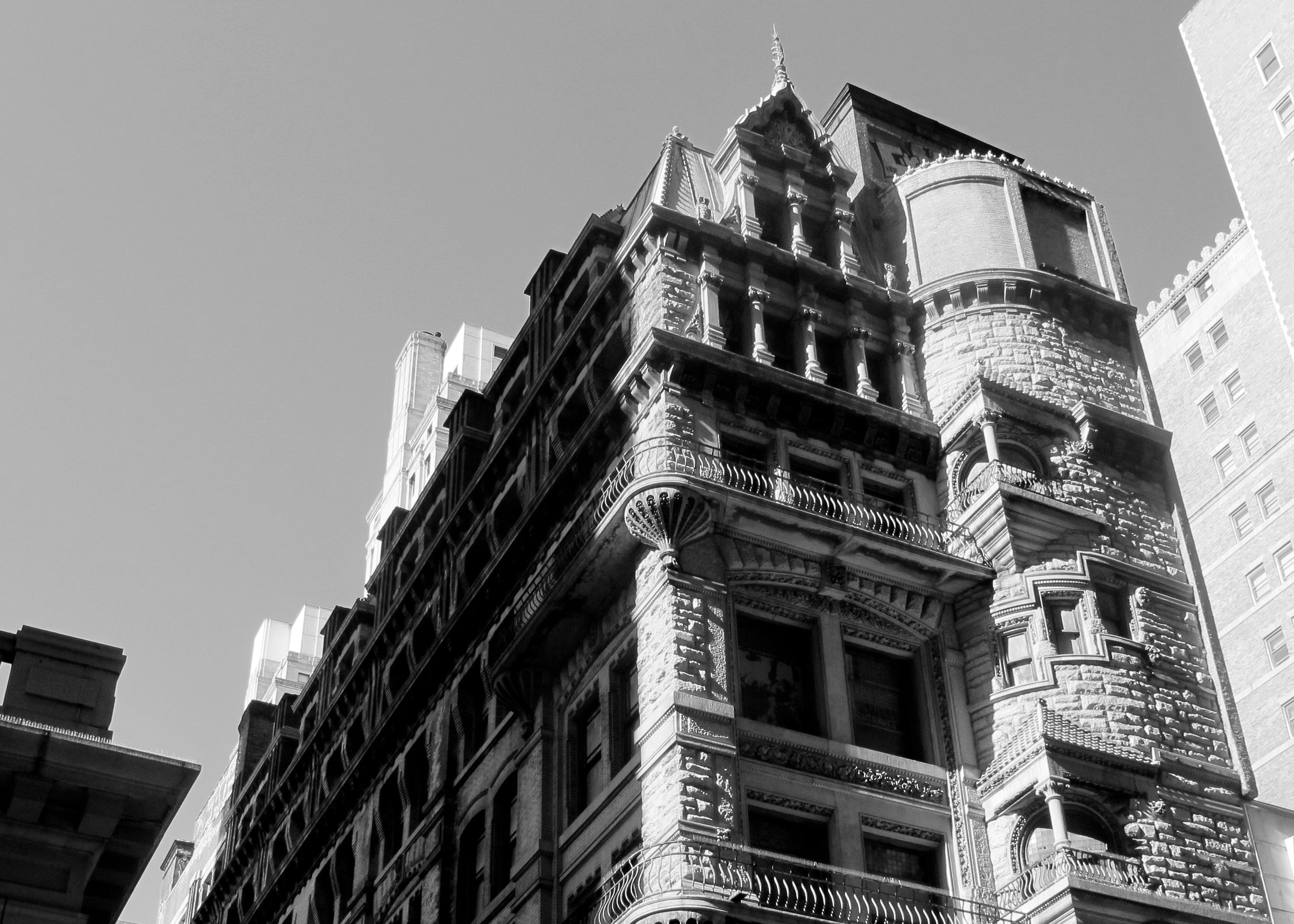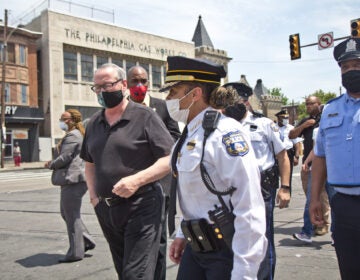Kenney launches Historic Preservation Task Force

Jim Kenney’s administration says it wants to improve the city’s historic preservation environment while encouraging people to see preservation and development as partners in urban growth. Figuring out how to make that happen is the charge of a new Historic Preservation Task Force announced Thursday morning by the mayor.
The task force’s mandate is to evaluate the city’s current preservation apparatus against national best practices, and to make recommendations about the best ways to survey historic resources, incentivize adaptive reuse, create structures that support a variety of preservation outcomes, and educate the public about the value of historic preservation.
“We need to look at preservation for a city that is adding people and jobs, while still keeping in mind the resource constraints we face,” said Mayor Jim Kenney in a statement released Thursday.
While serving in City Council, Kenney worked at Vitetta, a Philly-based design firm that does a lot of historic preservation work. Through that experience, Kenney has said, he learned a lot about preservation. As a councilman and during his campaign, Kenney was vocal about his belief that Philadelphia’s historic fabric is fundamental to our city’s character and that historic assets should be the foundation upon which the city grows.
Now a year into his term, Kenney’s administration is prioritizing preservation planning in ways his predecessors have not. In addition to establishing this task force, the mayor’s budget this year enables the addition of two new staffers at the Historical Commission, marking its first point of growth in decades.
Historic Preservation Task Force
- Harris Steinberg, Task Force Chair (Drexel University)
- Leo Addimando, Building Industry Association (Alterra Property)
- Peter Angelides, Financial Analyst (Econsult)
- Oscar Beisert, Preservationist
- Duane Bumb, Commerce Department
- Cathy Califano, Department of Planning & Development
- Carl Dress, Historic Preservation Committee, AIA Philadelphia (Heritage Design Collaborative)
- Mike Fink, Department of Licenses & Inspections
- Patrick Grossi, Preservation Alliance for Greater Philadelphia
- Julia Gutstadt, Urban Land Institute (Dranoff Properties)
- Nan Gutterman, Historic Preservation Architect (Vitetta)
- Dominique Hawkins, Preservation Architect-Planner (Preservation Design Partnership)
- David Hollenberg, University Architect, University of Pennsylvania
- Lou Iatarola, Community Representative (Tacony)
- Bob Jaeger, Partners for Sacred Places
- Roland Kassis, Developer (Domani)
- Cory Kegerise, PA Historical & Museum Commission
- Melissa Long, Division of Housing and Community Development
- Randy Mason, Historic Preservation Academic (Univeristy of Pennsylvania)
- Shawn McCaney, William Penn Foundation
- Matt McClure, Land Use Attorney (Ballard Spahr)
- Doug Mooney, Archaeologist (Philadelphia Archaeological Forum)
- Justino Navarro, Community Representative (Spring Garden)
- Apurna Palatino, Department of Parks & Recreation
- Laura Spina, Philadelphia City Planning Commission
- Mark Squilla, City Council
- Bob Thomas, Philadelphia Historical Commission
- Seri Worden, National Trust for Historic Preservation
- James Wright, Community Development Corporation (PEC)
The task force announcement comes as historic resources seem increasingly pitched against high-profile development projects, such as Toll Brothers’ proposed tower on Jewelers’ Row or Pearl Properties’ demolition of the Boyd Theatre. As development pressure mounts in some areas, the city’s tools to encourage preservation, much less regulate it, remain limited. Just two percent of Philadelphia’s half-million buildings are locally designated as historic, though about 70 percent are more than 50 years old, making them potentially eligible for designation.
But the task force isn’t designed to put out near-term fires when preservation and development conflict. Instead it is charged with creating a roadmap Philly can use to build a stronger environment for preservation even as the city welcomes new growth and development.
Harris Steinberg, director of Drexel University’s Lindy Institute for Urban Innovation, will chair the new task force. Steinberg has led similar public processes, such as his work at PennPraxis to develop a Civic Vision for the Central Delaware* ten years ago, and served on the city’s Historical Commission from 2001-2006.
Steinberg said that while preservation is an important value to him, he also strongly believes in the ability of cities to evolve. “That which we’ve inherited was new once,” as he puts it, and it’s that layering of history that helps create a unique sense of place.
Steinberg said the task force’s path is not set, but its mission is to deliver an “open, transparent, deliberative process to assess the state of preservation as it relates to development in Philadelphia.”
First that will mean assessing the current state of preservation in Philadelphia, including the city’s historic preservation law, and looking at national best practices in order to come up with “concrete steps which improve the relationship between preservation and development.”
Including Steinberg, the task force has 29 members representing built-environment branches of city government alongside individuals representing development, design, archaeology, preservation and community constituencies.
Technical assistance will come from the National Trust for Historic Preservation, which will help inform Philadelphia’s task force about best practices from other cities and support the process through mapping, research, and data analysis. Seri Worden, a senior field officer with the Trust, explained the latter would lean on the Trust’s Preservation Green Lab, which has worked in Philly before. In 2014 it worked with Philadelphia’s chapter of the Urban Land Institute to develop the report “Retrofitting Philadelphia,” which explored the opportunities associated with Philadelphia’s historic building stock and recommended strategies to optimize building reuse.
When it comes to best practices, Worden stressed, no one city has the answers. But lessons learned in other cities can help shape the task force’s recommendations. For example, she said, Baltimore is doing a lot of interesting work in encouraging building reuse and preservation, while Boston has a demolition delay policy. Cities like Los Angeles and Phoenix have made major strides in surveying historic resources – a huge undertaking that’s long been on the preservation community’s wish list and something that has been attempted in fits and starts. “We want to help with at least a methodology and options for surveying that aren’t extraordinarily expensive,” Worden said. Detroit, she noted, has enlisted the public.
Steinberg said he believes this process can help cultivate an increased awareness of the benefits of preservation among the public. And in the end he hopes this work can help forge “some kind of social compact between all the different vested interests that preservation is an important piece of who we are. It doesn’t mean all or nothing.”
Funding for the effort is supported by a $183,000 grant from the William Penn Foundation, and its director Shawn McCaney sits on the task force. The foundation’s support is especially notable as it had shied away in recent years from funding Philadelphia preservation work as significantly as it had in the past.
The task force has 18 months to deliver: It will begin work in June, releasing an interim report in spring 2018, a draft report in fall 2018 and a final report in December 2018.
The city released an RFP Thursday to hire a project manager for the task force, and staff from the Department of Planning and Development will support the work as well. Its monthly meetings will be public and the task force will convene in locations around the city.
“If everyone is in it for the right reasons, we’ll have a good process,” Steinberg said, hearkening back to the city’s zoning code commission, which spent five years reworking the city’s zoning code.
“The mayor’s invitation says a lot about the political will to improve the preservation apparatus in Philadelphia,” Worden said.
Steinberg echoed that optimism about the road ahead, calling it a “once in a generation” opportunity. “I haven’t seen any city-led, mayoral appointed group charged with doing this work in my conscious lifetime.”
*Disclosure: PlanPhilly began at PennPraxis during the Central Delaware project.
WHYY is your source for fact-based, in-depth journalism and information. As a nonprofit organization, we rely on financial support from readers like you. Please give today.







